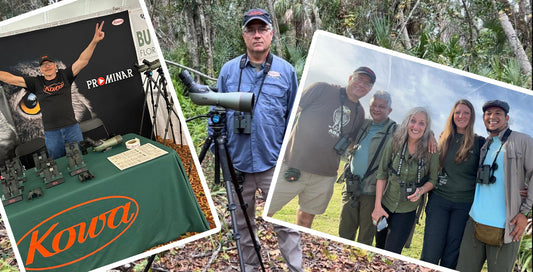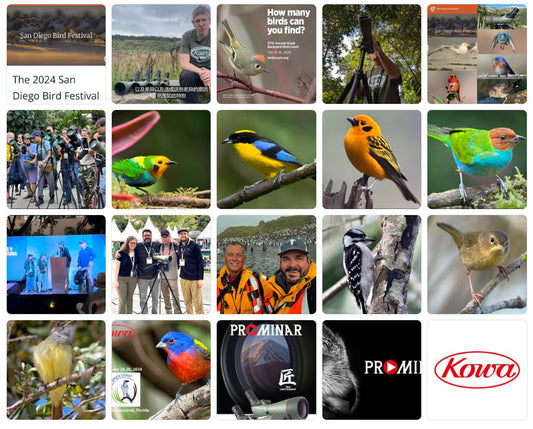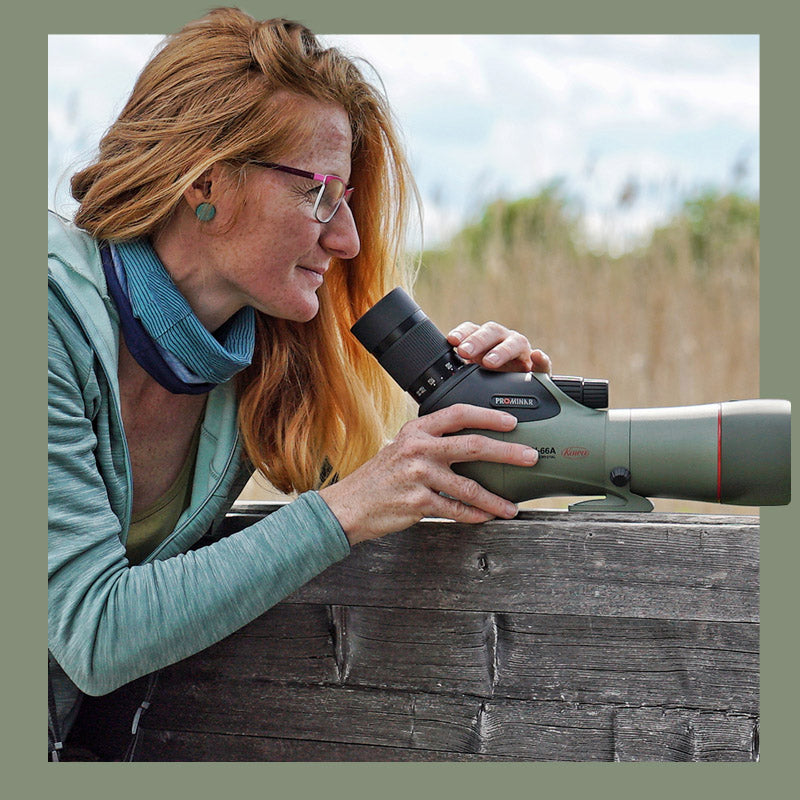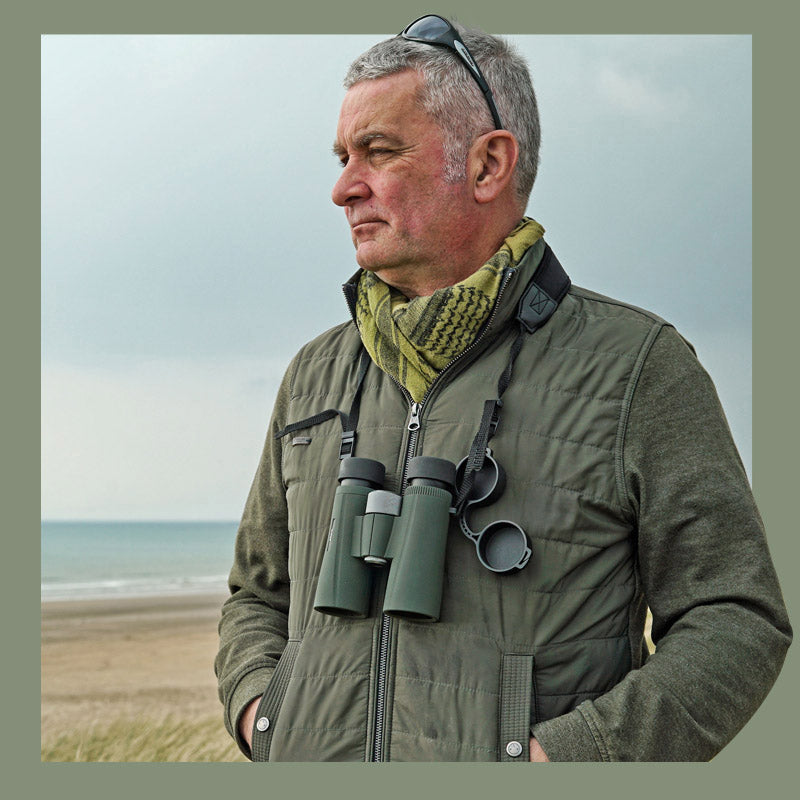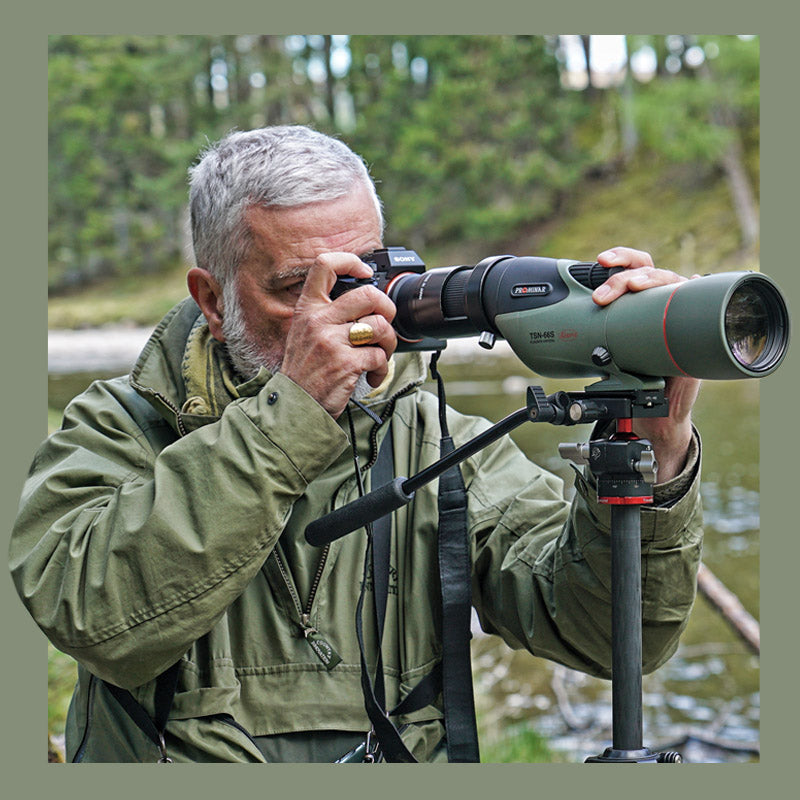The Urban Birding Experience at the London Wetland Centre
“It’s like meditation for the mind — a form of mindfulness through nature.” That’s how David Lindo, widely known as The Urban Birder, described the essence of birdwatching as he welcomed attendees to his Urban Birding Course at the WWT London Wetland Centre last March. Supported by Kowa Sporting Optics, the event invited participants to see their everyday surroundings in a new light, proving that wildlife is closer than most of us realize.

Nature Among Skyscrapers
Urban life might seem far removed from the natural world, yet more than 600 bird species have been documented across the UK — and an impressive 90% of them have been sighted in towns and cities. The takeaway is simple: you don’t need to escape the city to connect with nature. Birds thrive in unexpected places — on balconies, rooftops, canal paths, and even busy high streets.
As one of the UK’s most recognized voices in urban wildlife advocacy, David Lindo has dedicated his career to showing people that nature exists everywhere, even in the heart of a metropolis. His day-long course blended knowledge, humor, and interaction — sparking curiosity while challenging participants to look closer at the urban environment around them.

The Setting: London Wetland Centre
Tucked within southwest London, the WWT London Wetland Centre feels worlds away from the city’s pace. Originally a network of Victorian reservoirs, it’s now transformed into a thriving wildlife sanctuary that attracts more than 180 bird species each year. Visitors can spot everything from Kingfishers and Sand Martins to Eurasian Bitterns and Yellow Wagtails. With its open lakes, reed beds, and quiet observation hides, the centre served as a fitting classroom for a day dedicated to mindful birding.

Learning from the Urban Birder
Participants enjoyed an immersive and practical introduction to city-based birding, covering a range of topics such as:
Bird ID Skills: Tips for identifying common species and distinguishing tricky lookalikes.
Choosing the Right Optics: A hands-on comparison between basic binoculars and top-quality optics, highlighting why “try before you buy” matters.
Fieldcraft Essentials: How to blend in, move quietly, and dress for comfort in all seasons.
Migration and Movement: Exploring how city landscapes influence migratory routes and bird behavior.
Finding Your Patch: Encouraging attendees to explore and protect the nature that exists in their own neighborhoods.
In typical Urban Birder fashion, David mixed insight with storytelling, sharing fascinating tidbits — like why Wrens are unique in their family, how to tell rooks from crows, and the surprisingly powerful call of a Cetti’s warbler. A spontaneous quiz, asking participants to name a European bird that doesn’t include “European” in its name, brought laughter and friendly debate.
Bringing Optics Into Focus
To elevate the field experience, Kowa supplied each participant with a pair of YF II binoculars — lightweight, wide-field optics designed for clarity and ease of use. Their robust porro-prism construction and anti-glare coatings provided sharp, bright views throughout the day. Attendees also had the chance to try out Kowa spotting scopes, enjoying close-up views of species such as Oystercatchers, Shovelers, and a graceful Black Swan gliding through the wetlands.

A Memorable Day of Discovery
Though the March air carried a chill, the enthusiasm of the group was palpable. Under bright skies, participants enjoyed a day filled with new sightings, shared stories, and a renewed sense of connection to the natural world around them. From Moorhens and Mute Swans to an exhilarating moment when a Peregrine Falcon clashed mid-air with a crow, the day was full of wonder.
Kowa Sporting Optics is proud to support initiatives like the Urban Birder Course — experiences that inspire people to pause, observe, and appreciate the wild beauty woven through our urban landscapes, whether that’s a local park, a garden, or a hidden corner of the city.


